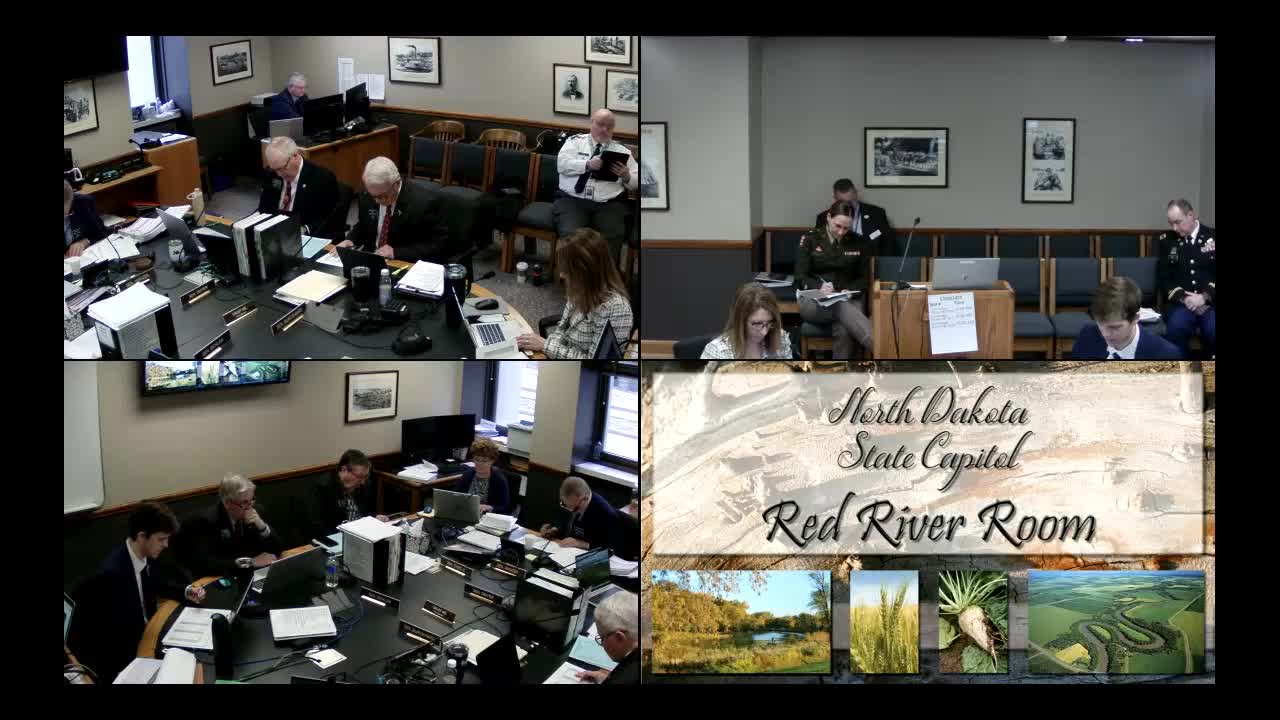Senate Committee seeks ongoing funding for $2M disaster relief initiative
March 20, 2025 | Appropriations - Government Operations Division, Senate, Legislative, North Dakota
This article was created by AI summarizing key points discussed. AI makes mistakes, so for full details and context, please refer to the video of the full meeting. Please report any errors so we can fix them. Report an error »

In a pivotal discussion during the North Dakota Senate Appropriations - Government Operations Division meeting on March 20, 2025, lawmakers addressed the urgent need for ongoing funding for disaster relief efforts. The committee is considering a proposal to secure $2 million in emergency response funding as part of a broader strategy to manage natural disasters effectively.
Currently, the funding for disaster relief is provided by the North Dakota Industrial Commission, but they are unable to continue this support. The proposed $2 million would transition from one-time funding to a base budget allocation, ensuring that the state can respond promptly to emergencies as they arise. This funding is crucial for addressing ongoing disasters, including recent incidents like ice jams and wildfires.
Senator Sigler raised questions about the current budget base for disaster relief, highlighting the need for clarity on how these funds would be utilized. The agency confirmed that while they have received one-time funds, they are seeking to establish a consistent budget line for disaster response to better manage future emergencies.
The committee also discussed a larger figure of $26 million, which represents federal and special funds earmarked for ongoing disaster projects. This funding is essential for completing work on ten open disaster projects, some of which have been ongoing for several years. The majority of this funding comes from federal sources, including FEMA, which requires a state match.
Senator Dwyer emphasized the importance of understanding whether the funding should be classified as ongoing or one-time, noting that the nature of disaster funding often involves unpredictable needs. The consensus among committee members is that regardless of the classification, the funds would still be available for necessary disaster response efforts.
As the committee moves forward, the implications of these funding decisions will be significant for North Dakota's ability to respond to natural disasters effectively. The anticipated outcomes include a more structured approach to disaster funding, ensuring that the state is prepared for future emergencies while maintaining flexibility in budget management.
Currently, the funding for disaster relief is provided by the North Dakota Industrial Commission, but they are unable to continue this support. The proposed $2 million would transition from one-time funding to a base budget allocation, ensuring that the state can respond promptly to emergencies as they arise. This funding is crucial for addressing ongoing disasters, including recent incidents like ice jams and wildfires.
Senator Sigler raised questions about the current budget base for disaster relief, highlighting the need for clarity on how these funds would be utilized. The agency confirmed that while they have received one-time funds, they are seeking to establish a consistent budget line for disaster response to better manage future emergencies.
The committee also discussed a larger figure of $26 million, which represents federal and special funds earmarked for ongoing disaster projects. This funding is essential for completing work on ten open disaster projects, some of which have been ongoing for several years. The majority of this funding comes from federal sources, including FEMA, which requires a state match.
Senator Dwyer emphasized the importance of understanding whether the funding should be classified as ongoing or one-time, noting that the nature of disaster funding often involves unpredictable needs. The consensus among committee members is that regardless of the classification, the funds would still be available for necessary disaster response efforts.
As the committee moves forward, the implications of these funding decisions will be significant for North Dakota's ability to respond to natural disasters effectively. The anticipated outcomes include a more structured approach to disaster funding, ensuring that the state is prepared for future emergencies while maintaining flexibility in budget management.
View full meeting
This article is based on a recent meeting—watch the full video and explore the complete transcript for deeper insights into the discussion.
View full meeting
